1.Gulangyu Island

Gulangyu Island is located in Gulangyu Street, Siming District, Xiamen City, Fujian Province, with an area of 1.88 square kilometers. It faces Xiamen City across the sea and has a unique overseas Chinese culture as well as delicious Minnan specialty snacks. Various exotic buildings make Gulangyu Island unique. Representative attractions include: Sunshine Rock, Shuzhuang Garden, Haoyue Garden, Yuyuan Garden, Gulang Stone, Gulangyu Piano Museum, Zheng Chenggong Memorial Hall, Underwater World, Natural Seaside Baths, and Sea Heaven Architecture. In addition, there are many old buildings with different styles that are suitable for walking, daydreaming, and enjoying life quietly. There are many small bourgeois shops on the island, such as Zhang Sanfang Milk Tea Shop, Su Xiaotang, Miss Zhao’s shop, etc.
2.Botanical Garden
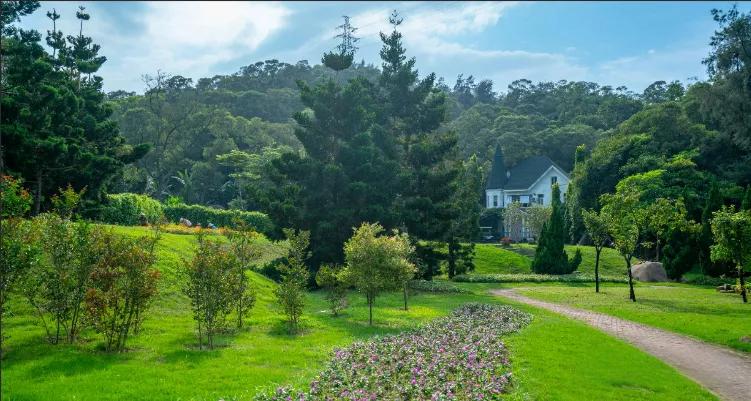
The Garden Botanical Garden, commonly known as the “Wanshi Botanical Garden”, is located in the Wanshi Mountain in the southeast corner of Xiamen Island, Fujian Province. It is backed by Wulaofeng, Nanputuo Temple, Xiamen University, and adjacent to the Zhongshan Road commercial district. It is the first botanical garden in Fujian Province and a carefully designed botanical garden around the Wanshiyan Reservoir. The park includes more than 20 specialized gardens and planting areas such as pine and fir gardens, rose gardens, palm gardens, large cactus gardens, flower halls, and orchid gardens, cultivating over 6000 tropical and subtropical plants. The Rainforest World and Sand Plant Area are particularly worth visiting. In addition to observing the plants, the park also gathers landscapes such as stone carvings, lakes, lawns, temples, etc. The highest point of the New Stele Forest overlooks half of Xiamen Island.
3.Garden Expo Park

Garden Expo Garden is located at No. 66, Jixing Seawall, Jimei District, Xiamen City. It consists of the original Xinglin Bay Zhongzhou and nearby islands, as well as some areas along the west and north coastlines of the bay. The overall layout is planned in the form of a peninsula and islands, consisting of nine islands and two peninsulas. Five of them are exhibition islands, and four small islands are ecological landscape islands. Based on this, a phased plan will be developed to build a natural native island to the east, an apricot orchard to the west, an education park, a stone culture park, and a forest leisure park to the north, forming a central park style large green space.
4.Railway Culture Park
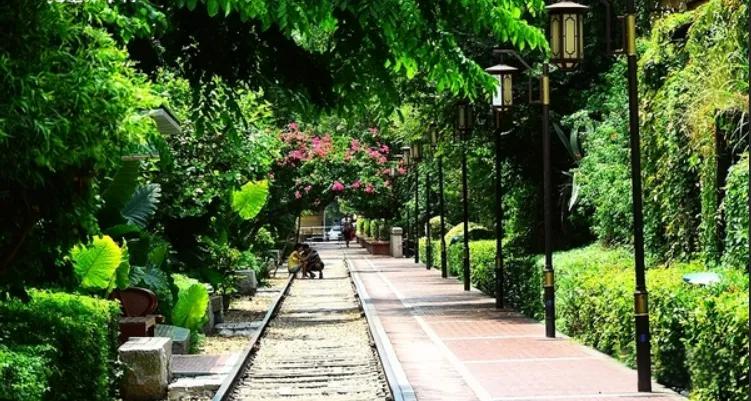
The Railway Culture Park is located between Wenping Road and Heping Wharf, Siming District, Xiamen. As an extension line of Yingxia Railway, this section of old railway has been abandoned for many years, but to some extent, it also retains the initial memory of Xiamen’s traffic development. With a long and strong historical and cultural background, unique and excellent geographical location, rich and beautiful natural landscape and convenient traffic conditions, it is a rare treasure in the central area of the city. There are four scenic spots distributed on both sides of the railway, namely Wanshou Area, Huxiyan Scenic Area, Wanshi Mountain Scenic Area, and Xiagang Old Town, each with its own characteristics.
5.Hulishan Battery
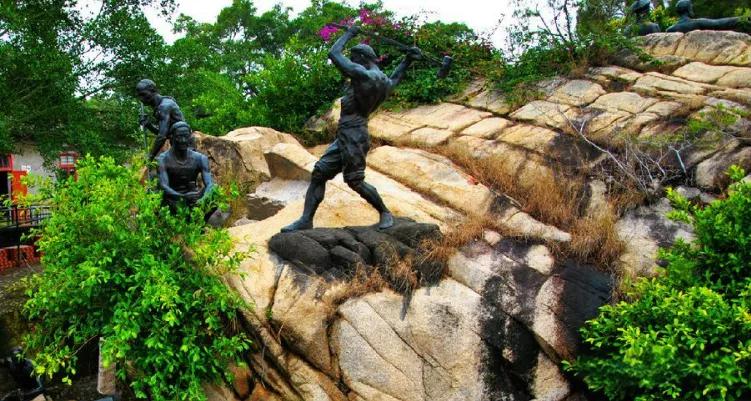
Hulishan Battery is located in the protruding part of the southeast cape of Xiamen Island, adjacent to Xiamen University Park, surrounded by the sea on three sides. The Hulishan Battery was first built in the 20th year of the Guangxu reign of the Qing Dynasty. It is divided into Zhanping District, Bingying District, and Houshan District, with concealed passages, ammunition depots, barracks, and government offices built inside. The battery is built with granite strips and compacted with camphor tree sap, charcoal, and glutinous rice mixed with mud and sand. Its structure is semi bunker style and semi city wall style, with the architectural style of Europe and China’s Ming and Qing dynasties, which is very beautiful.
6.yunding mountain
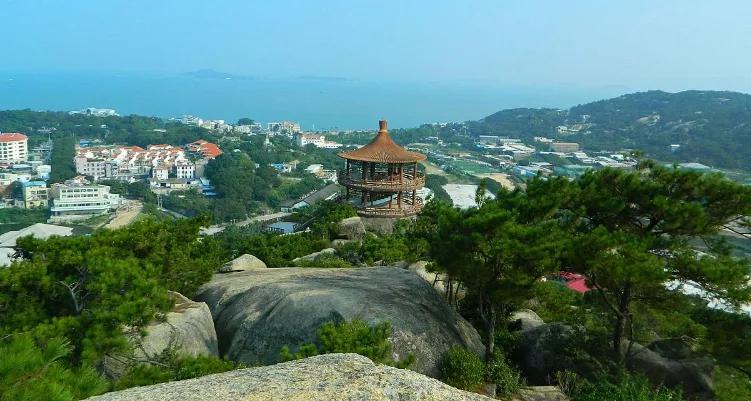
Yunding Mountain is located in the northernmost part of Tong’an District, Xiamen City, within Tingxi Town. It has an elevation of 1175.2 meters and is the highest peak in both Tong’an District and Xiamen City. The peak is often shrouded in clouds and mist, hence the name Yunding Mountain. The area of Yunding Mountain is about 9 square kilometers, running north-south with a gentle slope in the south and a steep slope in the north. It is composed of granite porphyry and has abundant water sources. The mountain is densely covered with streams and meets the Tingxi River in the south. There is a “Three Realms Monument” erected on Yunding Mountain, which is not only a place for tourists to climb and explore, but also a place with profound cultural heritage.
7.Jimei Study Village
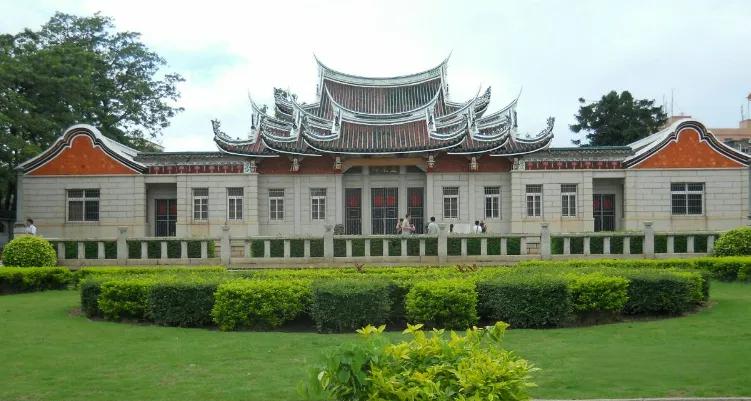
Jimei Study Village is a general term for various schools and cultural institutions in Jimei, located on the Jimei Peninsula in Xiamen. The learning village was founded by Mr. Tan Kah Kee with great investment. Famous scenic spots include the building of Mr. Tan Kah Kee, the Loong Boat Pool, the former residence of Mr. Tan Kah Kee, the exhibition hall of Mr. Tan Kah Kee’s life stories, the Park of Tan Kah Kee, Ao Garden, etc. Whether it is a large and spectacular school building or a small and elegant pavilion, there are all glazed roofs, dragon ridges and phoenix eaves, and carved beams and painted rafters. When you look closely, they have different ingenuity and are not the same.
8.Tianzhu Mountain Forest Park
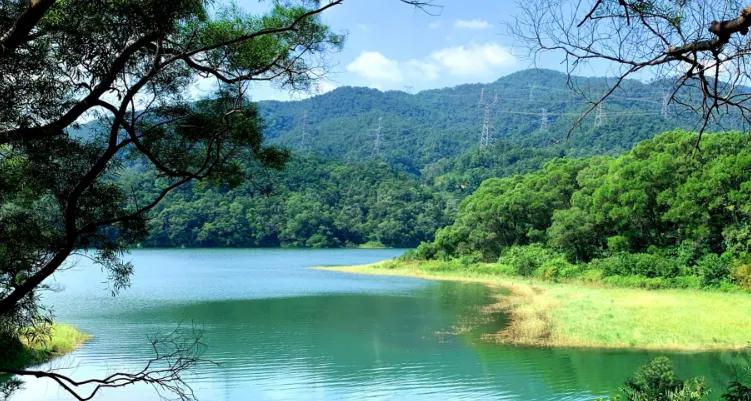
Tianzhushan Forest Park is located in the state-owned Tianzhushan Forest Farm in the northwest suburbs of Xiamen, about 36 kilometers away from the city center. It is a lush and green leisure area, known as the “backyard of Xiamen”. The peaks in the park are undulating, mostly above 700 meters, with the highest peak being Tianzhu Mountain at an altitude of 933 meters and the second highest peak being Xianling Banner at an altitude of 916 meters. There are five artificial lakes of different sizes, with a total storage capacity of over 1000 cubic meters. Among them, Xitou Lake has the largest water collection surface, reaching 11 square kilometers.
9.Zengcuo’an

Zengcuo An is located in the southeast of Xiamen Island, with the grass of Tu’er Ridge, the stones of Tailao Mountain, and the reefs of volcanic islands, integrating natural and cultural elements. With a history of over 800 years, it is known as the “most artistic village in the country”. This was once a simple fishing village, but now it has become a popular cultural and creative village. The modern and quaint neighborhoods blend together, with numerous unique small shops gathered on the streets. You can stroll, eat, buy, and take photos at the same time, which is enough for you to tinker with all day long. This is also a gathering place for characteristic homestays, with traditional courtyards, Baroque style detached villas, quaint and unique fishing village houses, and lively and personalized youth hostels.
10.Xiamen University

Xiamen University, founded by patriotic overseas Chinese leader Mr. Chen Jiageng in 1921, is one of the most beautiful campuses in China with its mountains and sea facing scenery. The quaint architecture of the Minnan overseas Chinese hometown, lush southern plants, and youthful Nanqiang students all retain their original appearance. The cultural charm of Jiannan Great Hall and Song’en Building, as well as the picturesque scenery of Furong Lake and Lover’s Valley, are the campus corners that best reflect the beauty of Xiamen University.
11.Zhongshan Road
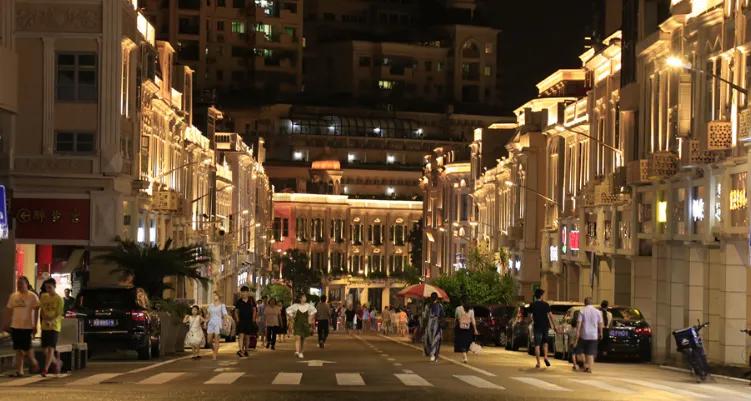
Zhongshan Road, located in Xiamen City, Fujian Province, is the oldest commercial street in Xiamen. The buildings here are all arcade style, with pink and milky white as the main colors, giving it a strong Nanyang flavor. The dazzling night view and a dazzling array of Fujian and Taiwanese snacks are also major features of Zhongshan Road Pedestrian Street. When it comes to Xiamen, Zhongshan Road is a must visit because it represents the prosperity, richness, and rhythm of the times of Xiamen. Here, you can enjoy a rich material world and appreciate modern charm.
12.Shapotou
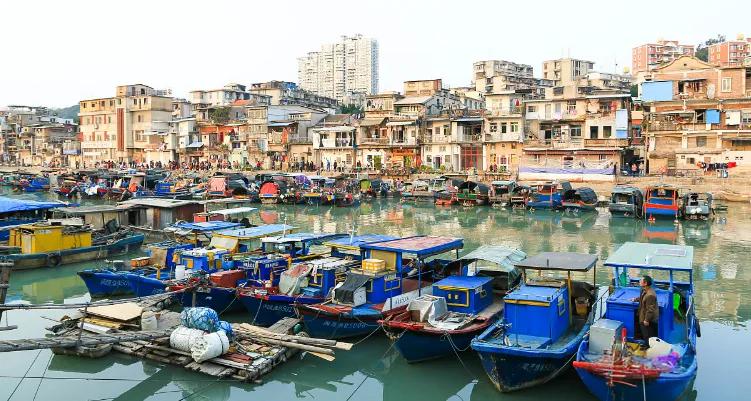
Shapowei is the birthplace of Xiamen Port, which has been a safe haven since the Qing Dynasty. Its name comes from the fact that it is the end of a large stretch of beach. The early Xiamen Port was an arc-shaped bay, with crescent shaped bays and golden beaches connected together, hence the nickname “Yusha Slope”. ·It is the true Xiamen Port in the hearts of old Xiamen people, named after the end of a long stretch of beach where sand from all over flows here.
13.Nan Putuo Temple
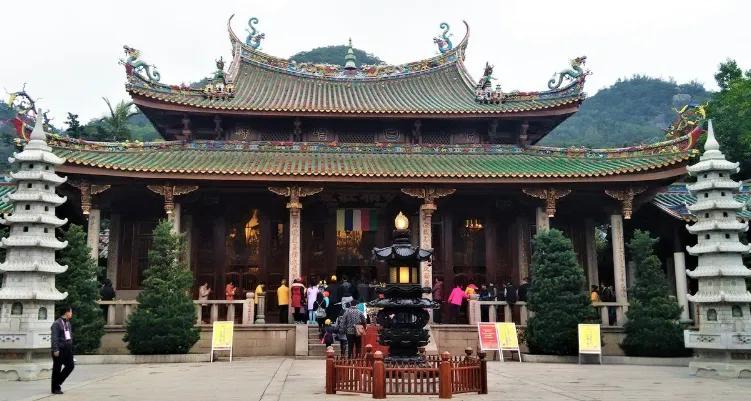
Nanputuo Temple is located at the foot of Wulao Peak in the southeast of Xiamen City, Fujian Province. It was first built in the late Tang Dynasty and was called Sizhou Temple. During the Song Dynasty’s Zhiping period, it was renamed Puzhao Temple. In the early Ming Dynasty, the temple was abandoned and not rebuilt until the Qing Dynasty’s Kangxi period. Due to its worship of Avalokitesvara Bodhisattva, similar to the Guanyin Temple on Mount Putuo in Zhejiang, and located south of Mount Putuo, it is named “Nanputuo Temple” and is one of the Buddhist destinations in southern Fujian. Wulao Mountain is the back mountain of Nanputuo Temple and one of the eight major scenic spots in Xiamen, where you can climb and enjoy the scenery.
14.Huandao Road
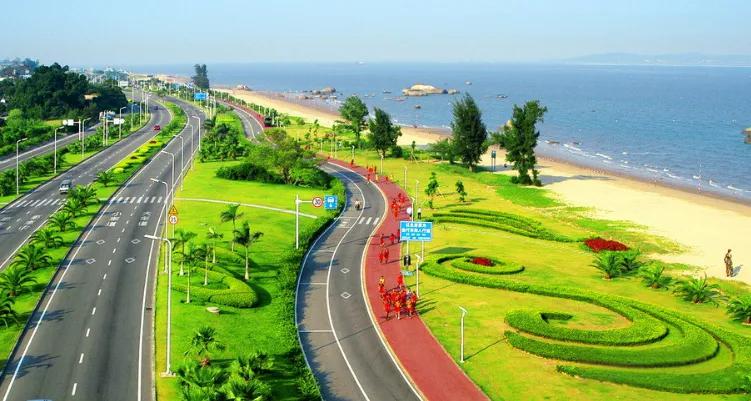
Xiamen Huandao Road is one of the main scenic tourist routes around the sea in Xiamen city. The construction of Huandao Road has always adhered to the principle of “facing the sea and leaving the most beautiful beach for the people”. Some are built by the mountains and the sea, some are built by bridges over the sea, and some are drilled through rocks. The construction starting point is high and the standards are strict, fully reflecting the characteristics of subtropical scenery. The wooden plank road of Huandao Road is about 6 kilometers long, which is the most essence of Huandao Road and an excellent place for taking photos.
15.Moxin Mountain
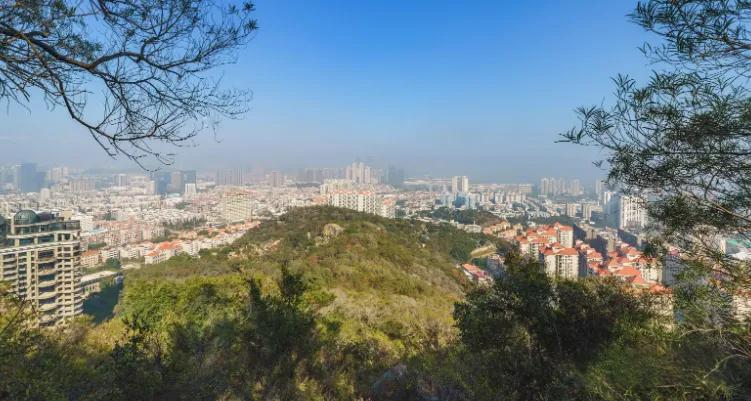
Moxin Mountain, a beautiful mountain name that few people know, is located between Qianpu and Wanshi Scenic Area on Xiamen Island. There is a nearly 6.5-kilometer hiking trail built on the mountain. Winding up the mountain from behind Ruijing New Village, reaching the summit, one can enjoy a panoramic view of Egret Island, overlooking the Haicang Bridge, Wuyuan Bay, Xiaojinmen, and more. Then, following the winding path, one can reach the exit of Qianpu South District, which can be said to provide a good place for residents in the surrounding areas of Qianpu to exercise, relax, and climb the mountain for sightseeing.
